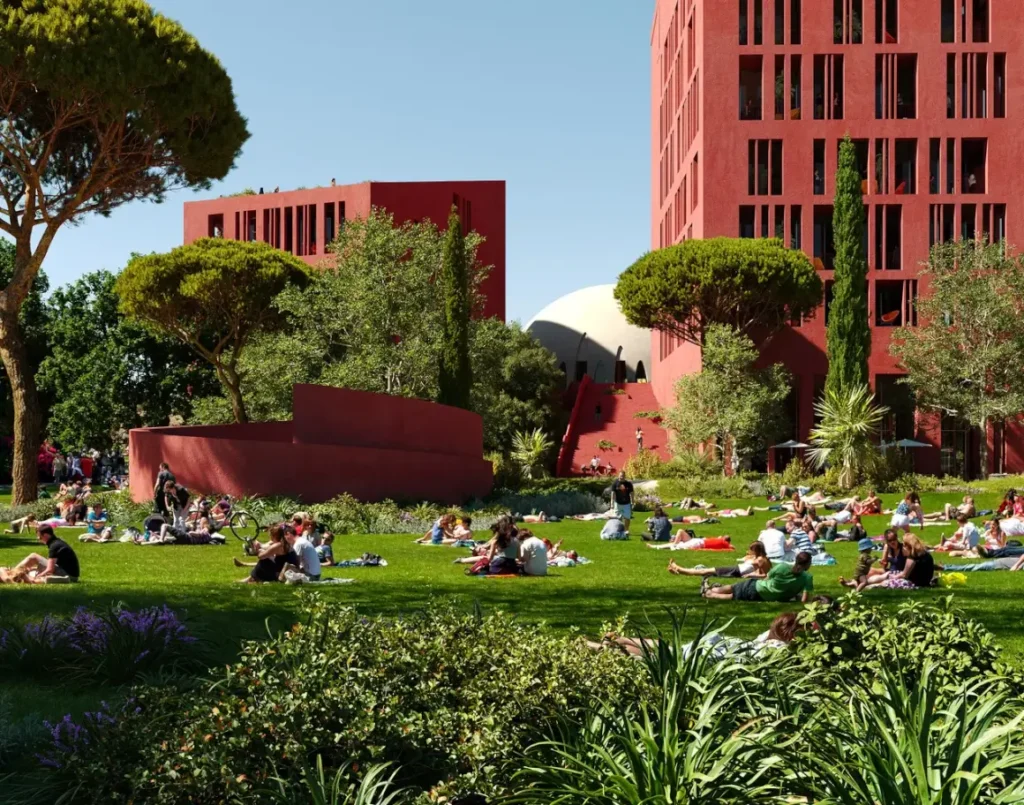Oppenheim Architecture has revealed the design for the College of Europe’s newest campus in Tirana, Albania that will be the institution’s first purpose-designed campus, tailored specifically to meet its educational and cultural objectives.
This project represents a major milestone in the College’s expansion, combining contemporary architecture with local Albanian influences to create a unique academic environment.
The expansion to Tirana aims to reflect both a continuation of this mission and an opportunity for the College to establish a presence in a historically significant city.
The Tirana campus is designed to reflect its role as a space for academic, social, and diplomatic engagement.
Unlike the previous two campuses, which are housed in historical structures, this new campus is purpose-built to meet the needs of the College and its diverse community of students, EU delegates, and local residents.
Oppenheim Architecture’s design incorporates elements of the local architectural vernacular and draws inspiration from Albania’s history, including the 1991 student protests, which played a key role in the country’s transition to democracy.
The design emphasizes social interaction both within the campus and in individual buildings.
Each building is organized to lead users from more public spaces to private areas, with communal workspaces and grand staircases promoting interaction.
Deep loggias wrap around the buildings, providing shaded social spaces and visual connections between different parts of the campus.
Rooftop terraces serve as extensions of an adjacent sports park, offering additional areas for social and recreational activities.
At the heart of the campus is a central circular “agora,” a multifunctional space designed for university lectures, diplomatic addresses, and artistic performances.
The agora is topped by a concrete dome, a reference to Albania’s concrete bunkers, and features concentric seating inspired by ancient Greco-Roman theaters.
This layout is intended to promote interaction and a democratic experience of space, with flexibility to accommodate various events and functions.
Surrounding the agora are three main buildings: a gateway building for public programs, including a library, museum, and event space; a university building with classrooms, lecture halls, and a cafeteria; and a diplomatic building with offices, meeting rooms, and accommodations for visiting EU diplomats.
These buildings are positioned at the edges of the site, connected by loggias that foster a sense of openness and connection.
The façades of the buildings are finished in dark-red pigmented concrete, reflecting Tirana’s architectural character, and feature structural details inspired by the music sheet of “Ode to Joy,” symbolizing unity and cooperation.
Additionally, the façades facing the agora are adorned with murals by local artists, integrating elements of the city’s cultural identity into the campus.
The overall design is informed by a detailed study of Tirana’s architectural landscape, incorporating materials, colors, and textures that reflect the city’s unique character.
The choice of dark-red pigmented concrete for the buildings and the raised terrace is a nod to Tirana’s architectural vernacular, while structural and non-structural elements also function as brise-soleils to regulate the internal environment.
The central dome is designed in a sandy-colored concrete, with arches creating both visual and physical links between the interior and exterior spaces.
Project: College of Europe’s Tirana Campus
Architects: Oppenheim Architecture
Photographs: Courtesy of MIR
Source link : https://globaldesignnews.com/symbolizing-albanias-cultural-heritage-the-college-of-europes-new-tirana-campus-designed-by-oppenheim-architecture-marks-a-significant-expansion-of-this-renowned-european-institution/
Author :
Publish date : 2024-10-08 13:04:27
Copyright for syndicated content belongs to the linked Source.
